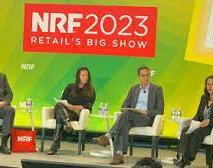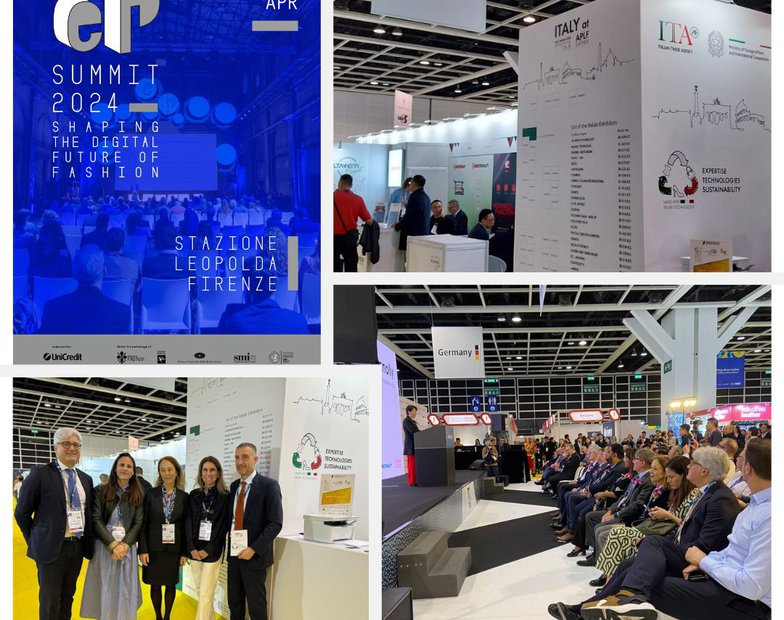- Financial polarization will define price tiers and assortment
- Global and long-distance supply chains will undergo major transformation
- Sustainability shifts from promise to proof
- The geography of spending in the U.S. is shifting
- The digital and physical retail world will become one
- Gen Z is transforming the future of shopping. (Source: Sourcing Journal)
The three days of hype, hope and unease about a teetering economy and potential technology disruptors that were the NRF 2023 Big Show at the Javits Center in New York City, culminated in a discussion of six “transformative retail trends that will break through disruption in 2023.”
In a word, according to Harvey Ma, SVP of retail for NielsenIQ, the U.S. consumer in 2023 can be described as “unsettled,” which in itself isn’t surprising, given the ongoing threat of recession that’s been hobbling an inflation-battered economy still recovering from the effects of a pandemic. What is surprising, Ma noted, is what’s accompanying that unsettledness.
“Consumers are in a pre-recession mindset, and that’s one of the catalysts of fragile times, but one of the most surprising things is that all of [the catalysts] are happening at the exact same time,” he said. “What’s surprising is how fast these trends are rising… No matter what we believe, personally, our customers are sharing that we’re already in a recession.”
NielsenIQ data showed that 59 percent of the people it polled believe America is already in a recession and that 49 percent of those believe the recession will last more than a year. Among all those polled, 33 percent only had enough money on hand for basic survival needs, making competition for the middle-class dollar all the more cutthroat.
“These same [middle classes] categories we were talking about a year ago experiencing rapid boom and rapid growth, those consumers now say they’ll likely spend less,” Ma said. “But in the midst of this enduring disruption there are also major waves of transformation under way, altering the future state of retail.”
With that, Ma unveiled NielsenIQ’s six trends and suggestions to survive them.
- Financial polarization will define price tiers and assortment
- Global and long-distance supply chains will undergo major transformation
- Sustainability shifts from promise to proof
- The geography of spending in the U.S. is shifting
- The digital and physical retail world will become one
- Gen Z is transforming the future of shopping
Ma pointed out that an already distant gap between the upper portion, or “The Thrivers” as described in his display, and “The Strugglers” is only growing to grow wider. The top group does not express much concern about a coming recession, but the group in the middle called the “Cautious,” and described as “not impacted financially but are cautious with spending,” has increased from 33 percent of the populace in January of 2022 to 42 percent now.
But while the bottom three-fourths of the economy is feeling bearish, the upper 10 percent is quite the opposite, leaving open a lane in retail for goods aimed at a “super-premium” customer, Ma said.
So while the rich get richer, supply chains around the world will become more regressive in a trend Ma calls “deglobalization.”
Protectionist policies surfacing around the world, coupled with lingering effects of Covid will have a profound impact on distribution.
“You are going to be longer and farther away from your supply chain, so that the world, rather than being smaller is going to feel like it’s much larger,” Ma said.
The NielsenIQ outlook also sees a future where business will no longer be able to kick the can down the road, paying mere lip service to environmentally friendly practices. This, Ma says, goes in concert with the sixth trend, the rise of Gen Z as a consumer force, a generation that will demand action on sustainability, and there will be a shift from promise to proof.
Ma shared a survey that showed consumers hold governments and brands most responsible for environmental conditions and 26 percent say that companies “make it harder, not easier to shop sustainably.”
Shifts not only in population from rural to urban centers, but in the money these people bring with them accounts for the fourth trend. Ma said metro areas thought of as secondary cities become primary ones. This coincides with the rise of e-commerce and “last mile marketing,” delivering practically everything right to the shopper’s doorstep.
A graphic depicting the 20 U.S. cities expect to grow the most in GDP by 2035 shows the top four and seven of the top 10 all west of the Mississippi River, led by San Jose, Calif., Portland, Ore., Austin, Texas, and Seattle, with Charlotte, N.C. at No. 5.
Ma’s fifth trend may be a bit ambiguous, but the notion of the physical and digital worlds of commerce “becoming one” is nothing new.
“We’re all tired of the words e-commerce, omni commerce, in-store, online… but here’s the thing… we’re going to see the gap between the digital and physical exist no longer,” Ma said. “The digitization of the physical store is happening at a rate like never before and there’s positive and negative to that.”
Ma said the strong performance of in-store sales originating from online interactions, in contrast to online “click-and-collect” purchasing has been nothing short of shocking.
“Online is still rolling and we’re starting to see some lines of stabilization, but with the online component, the trend we found startling is the slowdown of click and collect,” Ma said. “No doubt, online sales are still rolling at a double-digit rate but in 2021 and 2022 they were in decline.”
The final trend, the rise of Gen Z as a buying force, essentially informs all the others. Though those between the ages of 10-25 do not have tremendous buying power at the moment, they will in the near future, and in the meantime, they are an entirely digital, social and round-the-clock audience, they demand real action on climate change, including a professed affinity for resale over buying new.
“Get ready, because this generation is a connected and continuously connected consumer,” Ma said. “Gen-Z is an inspired ecosystem of ‘always on’ poised for retail—on demand, anywhere, anytime. They take ‘anytime’ to a completely new level,” Ma said. “They are actually reinventing that traditional relationship between the retailer and the consumer; it’s now circular. They are creators and influencers, so it’s full-circle now. Those retailers who don’t have arms and legs in social should want to be. Gen Z is extremely loyal, but they want to be wowed by their experience.”
In his final piece of advice before much of the more than 15,000 people who attended the three-day event began saying their farewells and exhibitors began breaking down their displays, Ma told the crowd of retail industry stakeholders that success in the world to come relies on knowing and positioning oneself around three pillars:
- Know your consumer, even when they’re outside the four walls of your business or website.
- Up your collaboration with suppliers in ways that don’t include data selling.
- Uphold your marketplace by knowing your full omnichannel read, and identify and address your leaks.
“These are the basic building blocks,” Ma said. “The first question you should ask yourself is, does this in a positive way or a negative way affect me?”



